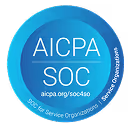Budgeting and forecasting are indispensable tools for steering organizations toward sustainable growth and profitability. These financial practices provide a roadmap for decision-making, helping firms allocate resources effectively, anticipate future needs, and respond proactively to market dynamics.
Unlike other industries, professional services face unique budgeting and forecasting challenges due to their work's project-based nature, fluctuating client demands, and the critical importance of human capital. Developing accurate and agile financial plans can empower organizations to navigate uncertainty, optimize operations, and align their strategic goals with financial realities.
Let's explore the intricacies of budgeting and forecasting, common pitfalls, and innovative strategies for enhancing financial foresight and organizational resilience.
In this article
What is budgeting?
What is forecasting?
Benefits of budgeting for business success
Key budget types every business should know
Types of forecasting methods in professional services
Benefits of effective forecasting
Best practices for accurate financial forecasting
Common challenges involved in budgeting and forecasting
Align budgeting and forecasting with your business strategy with Rocketlane
What is budgeting?
In professional services, budgeting refers to the process of creating a detailed financial plan that outlines expected revenues and expenses over a specified period, typically a fiscal year. This involves projecting income from client engagements, estimating costs associated with delivering services, such as salaries, technology, and operational expenses, and aligning these projections with the firm's strategic goals.
Given the project-driven and client-centric nature of professional services, budgeting must accommodate variable factors like fluctuating client demand, project timelines, and resource allocation. An effective budget serves as an organization's financial blueprint for the organization, guiding decision-making, ensuring profitability, and enabling proactive adjustments to market changes or unexpected challenges.
What is forecasting?
Forecasting in professional services involves predicting future financial performance and operational needs based on historical data, current market conditions, and emerging trends. This process aims to estimate future revenue streams, staffing requirements, and project pipelines, helping firms anticipate changes in client demand and adjust their strategies accordingly.
Unlike budgeting, which sets a financial plan for a specific period, forecasting is an ongoing process that provides a dynamic view of the firm's financial outlook. Accurate forecasting enables professional services organizations to make informed decisions about resource allocation, manage risks, and identify growth opportunities, ultimately supporting strategic planning and enhancing competitive advantage in a rapidly evolving market.
Benefits of budgeting for business success
Budgeting is a critical component of financial management, offering a structured framework for planning and decision-making. It helps firms control financial performance, optimize resources, and align operations with strategic goals. Budgeting improves decision-making and adaptability by setting clear financial targets, enabling firms to seize opportunities in a changing market. Through careful budgeting, firms can meet financial objectives and maintain agility in a competitive industry. Here are some benefits of budgeting for your firm:
Better financial control
Effective budgeting enhances financial control by precisely tracking income and expenses, identifying cost-cutting opportunities, and optimizing resource allocation. Keeping an updated budget helps anticipate financial needs, plan expenses, and avoid deficits. It establishes benchmarks for performance measurement, minimizes overspending risks, and facilitates informed decisions, leading to a stable financial environment.
Resource allocation
Effective resource allocation is vital for maximizing budgeting benefits and business success. Businesses ensure key areas are well-funded by planning resource distribution, thus boosting efficiency. Strategic allocation prioritizes high-ROI projects, minimizes waste, and adapts to market changes while identifying underperforming areas for correction. A well-structured budget promotes transparent decision-making and accountability, positioning a business for strategic goal achievement and sustainable growth.
Goal-setting
Setting clear financial goals is essential for business success through budgeting. It allows businesses to focus resources, allocate funds strategically, and prioritize initiatives. Goals guide decision-making, help avoid unnecessary spending, and identify opportunities. They enhance accountability and motivate teams. Aligned budgeting with business goals supports long-term growth and stability.
Cash flow management
Effective cash flow management is vital for business sustainability and growth. A well-structured budget helps anticipate and manage cash inflows and outflows, ensuring funds cover expenses, investments, and unexpected costs. It identifies potential cash shortages, allowing for advance planning, and offers insights into spending and revenue trends for informed decision-making.
Informed decision-making
Budgeting aids business success by enabling informed decision-making through clear financial insights. It helps identify revenue and expense trends, cost control areas, and growth opportunities. A budget provides a framework for evaluating ventures and risks, ensuring decisions are based on accurate data. This prioritizes initiatives aligned with goals, enhancing performance and competitiveness.
Key budget types every business should know
Effective budgeting is a multifaceted process, incorporating various types of budgets that together provide a comprehensive financial framework for a business. Each type of budget serves a distinct purpose, helping businesses manage resources, forecast financial outcomes, and align operations with strategic goals. Here are the key budget types every business should be familiar with:
Operating budget
An operating budget outlines a company's estimated revenues and expenses over a period, usually a fiscal year. It details sales forecasts, costs, and projected income, serving as a blueprint for managing cash flow, controlling costs, and assessing profitability. This helps businesses make informed decisions, optimize resources, and set performance standards aligned with goals.
Capital budget
A capital budget evaluates and allocates funds for major investments and asset acquisitions. It helps assess long-term costs and benefits of expenditures like new machinery or facility expansion. By forecasting returns, businesses can prioritize projects that align with strategic goals and manage risks, supporting sustainable growth and competitive advantage.
Cash flow budget
A cash flow budget forecasts a business's cash inflows and outflows over a specific period, ensuring it can meet financial obligations on time. It highlights cash timing, helps identify potential shortfalls or surpluses, and prevents liquidity issues. This budget enables optimal fund use and informed investment and expenditure decisions.
Project budget
A project budget estimates the total costs for completing a project, covering expenses like labor, materials, and equipment. It enables efficient resource allocation, risk identification, and realistic financial expectation setting. Tracking expenditures helps keep the project within budget and facilitates timely decision-making to prevent cost overruns.
Zero-based budget
The zero-based budget requires businesses to justify every expense each new period from scratch, rather than relying on past budgets. This approach promotes critical evaluation, reduces unnecessary costs, and ensures efficient resource allocation, aligning spending with strategic goals. It is especially beneficial during financial uncertainty or when optimizing operations.
Master budget
The master budget is a comprehensive financial plan that consolidates a business's individual budgets into one document, serving as a financial roadmap. It integrates operating and financial budgets, providing an overview of expected activities and financial position. This helps align strategy with targets, ensuring efficient resource allocation and performance monitoring, while identifying potential financial challenges.
Flexible budget
A flexible budget adjusts to changes in activity levels, providing a more accurate reflection of costs and revenues than a static budget. It's useful for businesses with varying production schedules or seasonal demand. By allowing comparison between budgeted and actual performance, it highlights variances, enabling better decision-making. This approach helps maintain financial control amid changing conditions.
Incremental budget
An incremental budget adjusts the current budget by a set percentage based on past performance or inflation. Favored for its simplicity, it requires minimal changes to existing frameworks but might overlook the need to evaluate actual needs or inefficiencies. It's best suited for stable environments with minimal operational changes.
Types of forecasting methods in professional services
Forecasting enables businesses to anticipate future trends, allocate resources effectively, and align their operations with long-term objectives. Various forecasting methods can be employed, each offering distinct advantages depending on the firm's specific needs and circumstances.
This section explores the various forecasting methods available to professional services, helping you choose the most suitable approach to drive growth and ensure operational excellence.
Straight-line method
The straight-line method is a simple forecasting technique used to predict future revenues or expenses, assuming historical trends continue unchanged. By extending past data trends, it estimates future performance at a constant growth or decline rate. It's useful for businesses with stable growth and minimal external impacts. Regular reassessment is crucial, as it might not account for unexpected market changes or shifts in strategy.
Moving average method
The moving average method is a fundamental forecasting technique used in professional services to smooth out short-term fluctuations and reveal long-term trends. By averaging a set number of past data points, it helps forecasters identify patterns and predict future values. It's particularly effective for time series data with minimal seasonality or trends. Simple moving averages give equal weight to all points, while weighted ones emphasize recent data for greater accuracy. Its simplicity and ease of calculation make it popular with businesses.
Simple linear regression method
Simple linear regression is a foundational forecasting method in professional services that predicts outcomes based on past data. It evaluates the relationship between two variables: one independent (predictor) and one dependent (outcome), by fitting a linear equation to data. Valued for its simplicity and ease of use, it is effective when the relationship is linear, providing insights that inform strategic decision-making and resource allocation.
Multiple linear regression method
Multiple linear regression is a statistical method used in professional services to predict an outcome based on several independent variables. Incorporating multiple predictors comprehensively analyzes factors influencing the outcome. This technique allows analysts to assess the impact of each predictor while controlling for others, enabling more accurate forecasts. It is especially useful in finance, marketing, and human resources, where understanding the interplay of factors is vital for strategic decision-making and optimizing performance.
Benefits of effective forecasting
Effective forecasting stands as a cornerstone for strategic planning and operational excellence in professional services organizations. Firms can gain valuable insights into future financial performance by leveraging accurate and timely forecasts, allowing them to make informed decisions that align with their long-term goals. This practice not only enhances resource allocation and risk management but also enables organizations to proactively respond to market dynamics and client demands. The benefits of effective forecasting extend beyond financial metrics. It fosters a culture of agility, resilience, and innovation, which is critical in an ever-evolving business landscape. Let us explore the advantages that effective forecasting offers professional services.
Improved decision-making
Effective forecasting enhances decision-making in professional services by providing a data-driven basis for strategic choices. Accurate predictions of trends and demands enable efficient resource allocation, project prioritization, and risk reduction. This approach supports informed financial planning and early identification of opportunities or threats. It aligns strategies with market dynamics, ensuring proactive decisions. Consequently, stakeholders can make confident, timely decisions, achieving organizational goals and maintaining a competitive edge.
Anticipating market trends
Anticipating market trends is key to effective forecasting in professional services. Analyzing current data and past trends helps businesses foresee changes in customer needs and the competitive landscape. This foresight enables proactive adaptation, aligning services with emerging demands and strategically positioning in the market. It also aids in resource allocation, ensuring teams are prepared to meet future challenges efficiently.
Resource planning
Effective forecasting in professional services enhances resource planning by ensuring timely allocation of resources to projects. This proactive approach helps anticipate demand, avoids staffing imbalances, and improves resource efficiency. Accurately predicting workloads aligns workforce and assets, minimizes downtime, and maximizes productivity. It also identifies skill gaps and training needs, preparing teams for upcoming challenges.
Revenue prediction
Effective forecasting greatly improves revenue prediction in professional services. Businesses can make informed investment and resource allocation decisions by accurately predicting future income. This helps anticipate market trends and optimize pricing strategies. Reliable forecasts improve cash flow management and aid in setting realistic financial goals. Accurate revenue prediction provides a stable financial foundation, enabling firms to navigate economic fluctuations with confidence and agility.
Risk mitigation
Real-time forecasting in professional services mitigates risks by anticipating challenges and enabling proactive solutions. Organizations can identify risks early by predicting future trends and demands and devise strategies to minimize impacts. This foresight aids in resource allocation, budget planning, and project management, keeping projects on track and within budget. It reduces uncertainty, enhances decision-making, and empowers companies to operate efficiently and resiliently, maintaining a competitive edge.
Best practices for accurate financial forecasting
Accurate financial forecasting is essential for professional services organizations aiming to navigate uncertainty and make strategic decisions with confidence. Implementing best practices in forecasting ensures that firms are better equipped to predict financial outcomes and align their operations with business objectives. This includes utilizing robust data analysis techniques, engaging cross-functional teams, and continuously refining forecasting models to reflect changing market conditions.
Adhering to these best practices helps organizations enhance the reliability of their forecasts, mitigate risks, and seize opportunities for growth and innovation. Here are some key strategies that underpin effective financial forecasting, guiding professional services firms toward greater accuracy and foresight in their financial planning efforts.
Use historical data
Utilizing historical data is essential for accurate financial forecasting. Companies can identify patterns that influence future performance by analyzing past trends and developing realistic forecasts. Historical data provides a reliable baseline to uncover anomalies and adjust projections. However, it's crucial to also consider current market dynamics and economic conditions. Using sophisticated analytics tools can further enhance forecast accuracy based on historical data.
Regularly update forecasts
Regularly updating financial forecasts is vital for maintaining accuracy and relevance. Revisiting forecasts monthly or quarterly allows businesses to incorporate new data and adjust for changes in market conditions, operations, or economic factors. This helps identify trends and variances quickly, enabling agile decision-making. By reassessing assumptions and validating predictions, forecasts become more realistic and reliable. This proactive approach helps mitigate risks, allocate resources effectively, and stay aligned with strategic goals in a dynamic financial environment.
Consider multiple scenarios
Incorporating multiple scenarios is crucial for accurate financial forecasting. Businesses can better understand potential risks and opportunities by evaluating best-case, worst-case, and most likely outcomes, leading to resilient planning. Scenario analysis helps anticipate market changes, adapt strategies, and stress-test financial models for robustness. This approach enhances a company's ability to navigate uncertainties and secure long-term stability, making it a best practice in strategic planning.
Involve key stakeholders
Involving key stakeholders is crucial for accurate financial forecasting. Engaging department heads, financial analysts, and executives ensure diverse insights and a holistic forecast. Stakeholders contribute critical input on market trends, operational constraints, and strategic priorities, which are essential for anticipating future performance. Regular collaboration fosters accountability and commitment, enhancing forecast accuracy and aligning organizational goals for informed decision-making.
Common challenges involved in budgeting and forecasting
Understanding common budgeting and forecasting challenges is essential for improving accuracy and efficiency in predicting financial outcomes and allocating resources appropriately. From managing variable client demands and project timelines to accommodating economic fluctuations and internal resource constraints, professional service firms must navigate an intricate landscape to maintain financial health and achieve their business objectives.
Here are some prevalent challenges organizations face as they strive to balance precision and flexibility in their budgeting and forecasting efforts.
Budgeting challenges
Inaccurate information
Inaccurate information poses a major challenge in budgeting, leading to flawed financial plans and unmet goals. This often stems from unreliable data sources, outdated records, or human error. When such information is used, budgets may not reflect actual financial conditions, causing misallocated resources and unrealistic projections. Organizations should implement rigorous data validation and regularly update records to ensure accuracy. Prioritizing data accuracy enables businesses to create more reliable budgets aligned with their operational realities and strategic objectives.
Overestimating revenue
Overestimating revenue is a common budgeting challenge, often resulting in financial shortfalls. This happens when sales predictions are too optimistic due to misjudged market conditions or competition. The result is misallocated resources and unmet financial obligations. To prevent this, businesses should analyze historical data, consider industry trends, and adopt conservative revenue forecasts. Regularly reviewing and adjusting forecasts helps align expectations with actual performance, ensuring financial stability and informed decision-making.
Budgeting takes time
Budgeting is a critical financial process that demands significant time investment, posing a primary challenge. This is due to the need to gather and analyze financial data, assess revenue and expense scenarios, and predict future conditions. Coordination across departments complicates timelines, especially in larger organizations. Moreover, iterative revisions to ensure alignment with business goals and market conditions can extend the process. Despite these challenges, dedicating sufficient time to create accurate and realistic budgets is essential amidst other responsibilities.
Lack of flexibility
A significant challenge in budgeting is the lack of flexibility, which can hinder an organization's ability to adapt to changing circumstances. Rigid budgets often cannot accommodate unexpected expenses or sudden market shifts, resulting in strategic limitations. Organizations with inflexible budgets may struggle to reallocate resources efficiently, missing growth opportunities or cost-saving measures.
Such rigidity can also demotivate teams, who may feel constrained by fixed financial parameters. To overcome this challenge, companies should consider adopting flexible budgeting approaches, like rolling forecasts, to respond more effectively to unforeseen developments and maintain financial agility.
Access to the right tools
Access to the right tools is a key challenge in budgeting, as many organizations rely on outdated or inadequate software that doesn't meet their evolving needs. Without proper tools, accurately compiling data, analyzing trends, and generating reliable forecasts become challenging.
This technological gap can lead to inefficient data management and errors, potentially resulting in poor decision-making. Investing in modern budget management solutions is essential for streamlining processes, enhancing accuracy, and achieving better financial visibility. Advanced tools not only automate tasks but also provide critical insights, enabling more informed strategic planning.
Forecasting challenges
Data quality and availability
Accurate forecasting depends on high-quality, accessible data. Inconsistent or incomplete data leads to errors and hinders decision-making. Challenges include the lack of real-time access and integration difficulties due to varied data formats. Ensuring reliable forecasts requires robust data collection, advanced management tools, and efficient data cleansing.
Changing market conditions
Forecasting in dynamic markets is challenging due to rapidly changing conditions like economic shifts, technological advancements, and changes in consumer behavior. Businesses face uncertainties such as fluctuating interest rates and geopolitical events, making adaptive forecasting methods and real-time data analysis essential. Since historical data is often less effective, organizations should prioritize flexibility in their forecasting models to respond to market changes and maintain a competitive edge swiftly.
Data across multiple systems
Integrating data from multiple systems is challenging in financial forecasting due to differing formats and structures. Independent systems create inconsistencies and data silos, leading to errors and inefficiencies. This hampers accurate trend prediction. Real-time data integration is complex, needing advanced tools, and maintaining data accuracy and consistency requires substantial time and resources. Overcoming these obstacles is crucial for reliable forecasting.
Complexity of variables
Forecasting financial outcomes is challenging due to the complexity and interdependence of various variables like market trends, economic indicators, and unexpected events. Each factor affects forecast accuracy, requiring sophisticated models and data analytics to understand patterns. The evolving nature of these variables necessitates constant updates, straining resources and impacting decision-making. Addressing these challenges is essential for effective financial planning.
Align budgeting and forecasting with your business strategy with Rocketlane
Rocketlane streamlines budgeting and forecasting processes with advanced resource management capabilities, providing detailed insights and real-time adjustments for more accurate financial planning.
Real-time forecasting
With Rocketlane’s forecasting feature, you can project resource needs, timelines, and costs based on historical data and current project plans. This feature allows you to anticipate potential bottlenecks or resource gaps and adjust your budget accordingly, ensuring smoother project execution. As resource allocations and timelines evolve, Rocketlane helps you keep forecasts accurate and actionable.
Cost estimation and resource allocation
During the project estimation phase, Rocketlane enables precise cost calculations by automatically considering resource requirements, roles, and effort levels. With pre-built project templates and Resource AI, Rocketlane helps you allocate resources and estimate costs for every phase, optimizing financial planning and allowing you to manage expenses efficiently throughout the project lifecycle.
Informed decision-making
Rocketlane’s resource availability planner provides clear visibility into team capacity, while the demand and supply dynamics feature helps make informed decisions about hiring and budget allocation. Whether you need to plan for future projects or adjust timelines to stay within budget, Rocketlane’s data-driven approach gives you the insights you need for better financial forecasting.
Ready to make the switch yet? Book a demo with Rocketlane today to streamline your team's budgeting and forecasting!
{{demo}}












